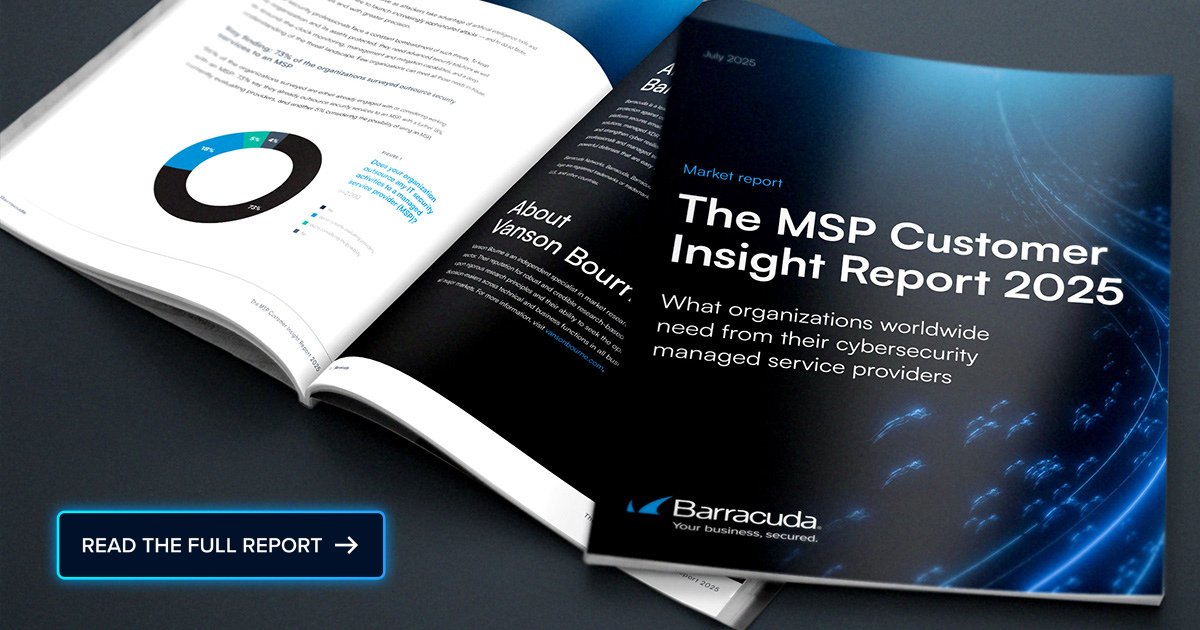 The full implementation of the Cyber Incident Reporting for Critical Infrastructure Act (CIRCIA) is rapidly approaching, bringing with it a new package of rules and regulations that managed service providers (MSPs) must follow, at least those serving critical infrastructure clients.
The full implementation of the Cyber Incident Reporting for Critical Infrastructure Act (CIRCIA) is rapidly approaching, bringing with it a new package of rules and regulations that managed service providers (MSPs) must follow, at least those serving critical infrastructure clients.
Joshua Charles, founder and CEO of Frontier Dominion, notes that MSPs with clients in critical infrastructure must help their clients report incidents to the Cybersecurity and Infrastructure Security Agency (CISA) within the 72-hour time window required by CIRCIA.
“This will require MSPs to robustly monitor and communicate the vulnerabilities and tactics used in an attack to their clients, offering an additional security service,” Charles tells SmarterMSP.com. He adds that MSPs should proactively conduct routine penetration testing and vulnerability assessments to identify system weaknesses and threats, while also becoming deeply familiar with CISA’s reporting requirements.
Among the biggest changes MSPs need to watch for, according to Charles, are the Director’s Rules, which will define key terms such as “covered cyber incident” and “substantial cyber incident.” He adds that “the clarified terms and guidelines will change the way MSPs support their clients in critical infrastructure, helping them maintain compliance.”
A catalyst for industry maturity
Michael Ko, founder and CEO of Suped, a platform dedicated to simplifying DMARC monitoring and enforcement, believes chief information security officers (CISOs) and MSPs should view CIRCIA not as another compliance burden, but as a catalyst for maturity.
“For years, the industry has talked about public-private partnerships and rapid information sharing; CIRCIA is the government putting a formal structure and a ticking clock on that concept,” Ko explains. “It elevates a significant cyber incident from a private company crisis to an issue of national interest.”
Ko emphasizes that this shift redefines the MSP’s role. “You’re no longer just the ‘IT guy’ or even the ‘security provider’—you are now a critical partner in your client’s federal compliance workflow.”
What this means for MSPs
Ko warns that the impact on MSPs serving critical infrastructure clients will be immense, even when the MSP isn’t the entity legally required to report. While the client bears the legal responsibility for CISA reporting, Ko points out the practical reality: “Who do you think they’re going to call the second an incident is detected? Their MSP.”
The timing requirements create immediate pressure. Ko notes that the 72-hour reporting clock for major incidents and the 24-hour clock for ransomware payments start ticking immediately, and MSPs are typically the ones with hands on keyboards and access to critical logs. “This puts MSPs squarely in the hot seat,” he states.
Ko stresses that service level agreements (SLAs) and master service agreements (MSAs) must be updated to reflect these timelines and define responsibilities. “If your response process causes your client to miss their reporting deadline, the legal and financial fallout could be significant,” he warns.
Essential preparation steps
According to Ko, preparation needs to start immediately, if it hasn’t already. He outlines several critical steps MSPs must take:
- Identify and classify critical infrastructure clients: Work proactively with clients to determine whether they fall under one of the 16 defined critical infrastructure sectors. This isn’t just about compliance. It’s a strategic service that positions your MSP as forward-thinking and client-focused.
- Update incident response plans to include reporting: Traditional plans focused on detection, containment, and eradication must evolve. A dedicated “Reporting” phase is now essential, with clearly defined steps, responsibilities, and timelines to meet CISA’s 72-hour reporting requirement.
- Conduct full-spectrum tabletop exercises: Simulations should go beyond technical response. Include mock reporting to CISA and practice gathering required data under pressure. Establish key roles and decisions, such as legal contacts and reporting authority, in advance to avoid scrambling during a crisis.
- Review and optimize your technology stack: Ensure your security information and event management (SIEM), endpoint detection and response (EDR), and logging tools are properly configured to deliver fast, reliable forensic data. If you can’t extract the necessary information quickly, compliance will be out of reach.
Speed is the new standard
Ko identifies several major shifts that CIRCIA will bring to the MSP industry. The most significant, he says, is “the formalization of speed.”
“The 72 and 24-hour rules aren’t suggestions—they’re mandates,” Ko explains. “This crushes the old approach of ‘let’s investigate for a few weeks to understand the full scope before we tell anyone.’ That’s no longer an option for a covered incident.”
Ko also highlights the issue of downstream liability, urging MSPs to be hyper-aware of contract language. “You need clear language that outlines your responsibilities versus the client’s.”
However, Ko sees significant opportunity amid these challenges. “The MSPs that master CIRCIA compliance for their clients will become indispensable,” he predicts. “They can build new, high-margin services around ‘CIRCIA Readiness’ and incident response, differentiating themselves from competitors who are slow to adapt.”
The bottom line
As both experts make clear, CIRCIA implementation represents more than regulatory compliance: it’s a fundamental evolution in how MSPs serve critical infrastructure clients. Those who prepare proactively will not only ensure compliance but also position themselves as essential partners in their clients’ national security responsibilities. The window for preparation is closing rapidly, and MSPs cannot afford to wait until the first incident strikes and the compliance clock starts ticking.
Photo: chaiyawat sripimonwan / Shutterstock
